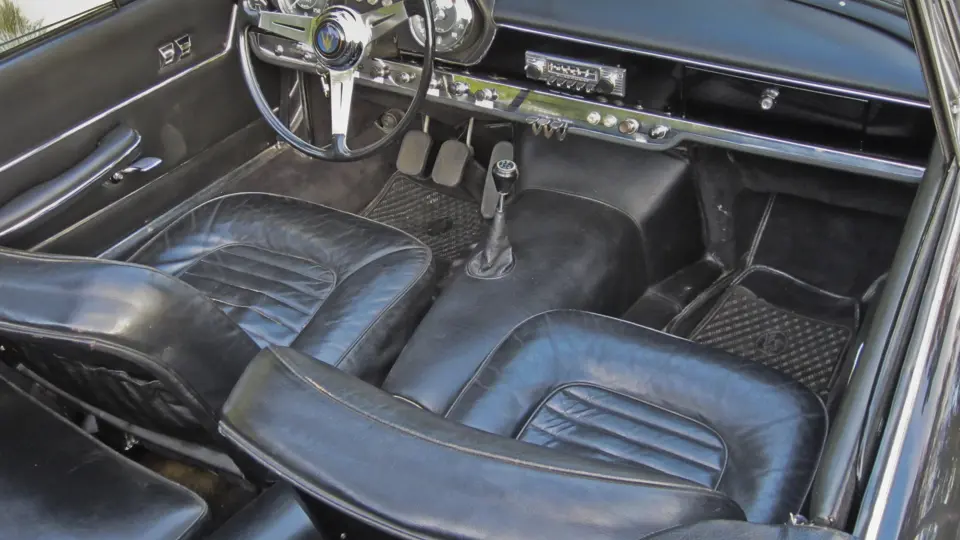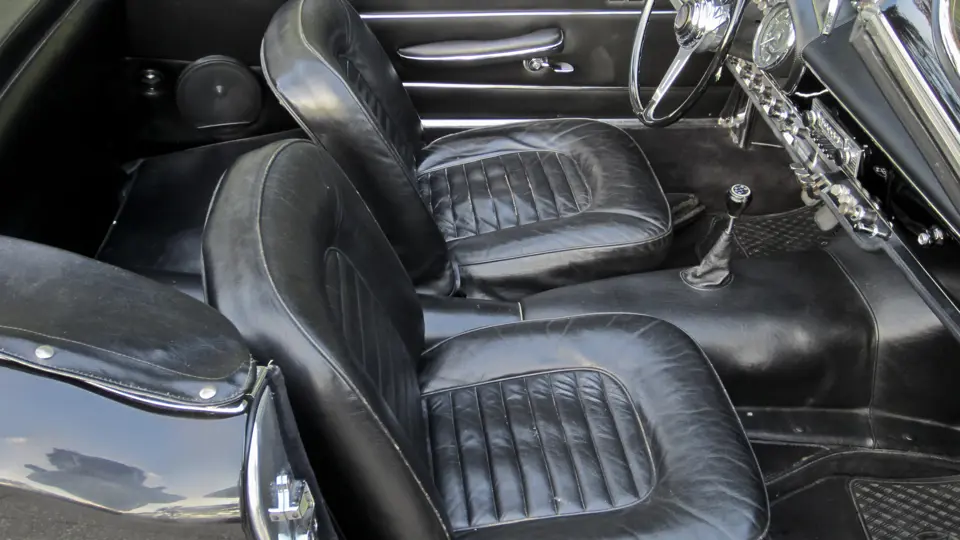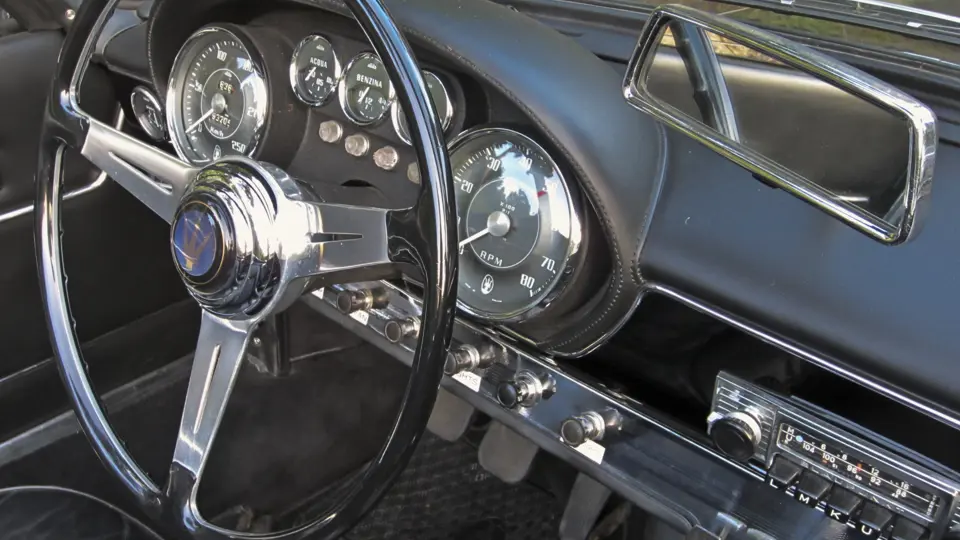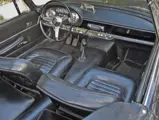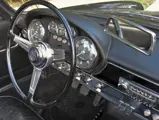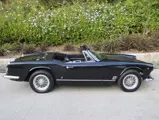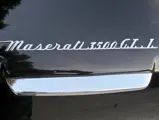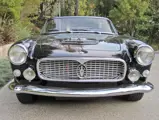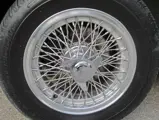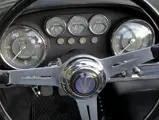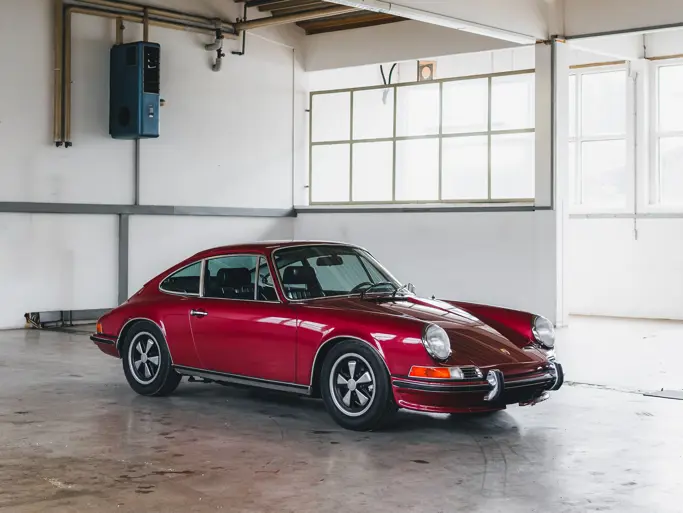220 bhp, 3,485 cc twin overhead camshaft twin-plug inline six-cylinder engine with triple 42 DCOE Weber carburetors, five-speed manual gearbox, independent front suspension with coil springs, solid rear axle on leaf springs and tubular shock absorbers, and four-wheel Girling disc brakes. Wheelbase: 98.4"
• Most desirable specification: triple Weber carburetion, five-speed gearbox, four-wheel disc brakes and power windows
• Elegant triple black color combination
• Rare and desirable Borrani wire wheels
Maserati is one of the great Italian racing dynasties, building winning racecars throughout the prewar period. After WWII, the company began producing a series of sports racers, which would ultimately lead to the company’s first street cars.
Introduced at the Geneva Motor Show in March 1957, the 3500 GT was a major departure for Maserati, a luxurious high-speed gran turismo that stunned the motoring public with its captivating design, technical innovation and coachbuilt appeal. Nearly 2,000 would be built during its nine years of production, a number that by all accounts is an order of magnitude greater than all the Maseratis built in the 30 years since Alfieri Maserati built and raced the Tipo 26.
Powered by a dual overhead camshaft six-cylinder engine developed by Ing. Alfieri from Maserati’s experience with the A6 and 350S, the 3500 GT became an important competitor in the luxury GT market. By the time the Turin Show of 1957 arrived, Alfieri had redesigned the camshafts and other small details of the engine to make them more reliable for street use. The 3500 GT coupe was well received by motoring press, the distributors as well as potential customers.
The 3500 GT was available as both a coupe with handsome Touring bodywork or, as in this case, the beautiful and considerably more rare Spyder with Vignale bodywork, introduced in 1960. The open bodywork of the Vignale featured their characteristic interesting details including a number of tasteful vents and scoops to augment the already well-proportioned and elegant lines. The Spyder also featured a four-inch shorter wheelbase than the coupe, which improved handling and road holding. Just 250 Spyders were built over a five-year period, compared to about 2,000 coupes.
Road & Track tested a Maserati 3500 GT Spyder in May of 1961 and commented favorably on its performance, handling and comfort. They compared it with the Ferrari 250 GT they had tested a year before, noting particularly that the Maserati’s acceleration was nearly as fast as the Ferrari which had the benefit of a 4.57 rear axle compared with the Maserati’s 3.54. R&T’s testers also noted that the Maserati’s brakes, even though the test car was still fitted with drums on all four wheels, were impressive in both their stopping power and their resistance to fade.
These first production convertibles were fitted with four-speed transmissions and a bonus of electric windows. Over the years many improvements were incorporated during the six-year production period of the 3500 GT. Disc brakes, an option in 1959, became standard in 1960, and a ZF five-speed transmission replaced the former four-speed unit. Lucas fuel injection replaced carburetors, but they sometimes proved difficult to tune. Borrani wire wheels were also offered though are rarely seen, as they were an expensive option when the car was new. The cost for these racy open Italian sports cars was a pricey $12,300 when new.
The example offered here is in very nice condition throughout, both cosmetically and mechanically, with a new soft top. It is a late 3500 GT Spyder from 1963 and is thus fitted with disc brakes, a significant improvement over the all around drums of earlier cars. The later Spyders were usually equipped with fuel-injection, however this example has the simpler and more reliable triple Weber carburetors—the sight and sound of which have delighted enthusiasts for years. The interiors of these late production Vignale Spyders also had revised reclining bucket seats, a floor-mounted emergency brake and electric windows. The bodies were mostly aluminum, and some, including this example, were fitted with the desirable five-speed transmission and rare Borrani wire wheels. This rare Spyder remains stunning in black with a black leather interior and matching black top. Accented nicely with tasteful chrome trim, bumpers and restored wire wheels, there are few GTs from that era that remain as elegant as this 3500 GT Vignale Spyder.
With low production numbers, exceptional build quality and potent engines, the 3500 GT Vignale Spyders are wonderful cars to own and represent exceptional value in the market today. This is an outstanding opportunity to acquire a rare coachbuilt open Italian car that continues to turn heads, is exhilarating to drive and is considered to be one of the best all-around sports cars of the ’60s.
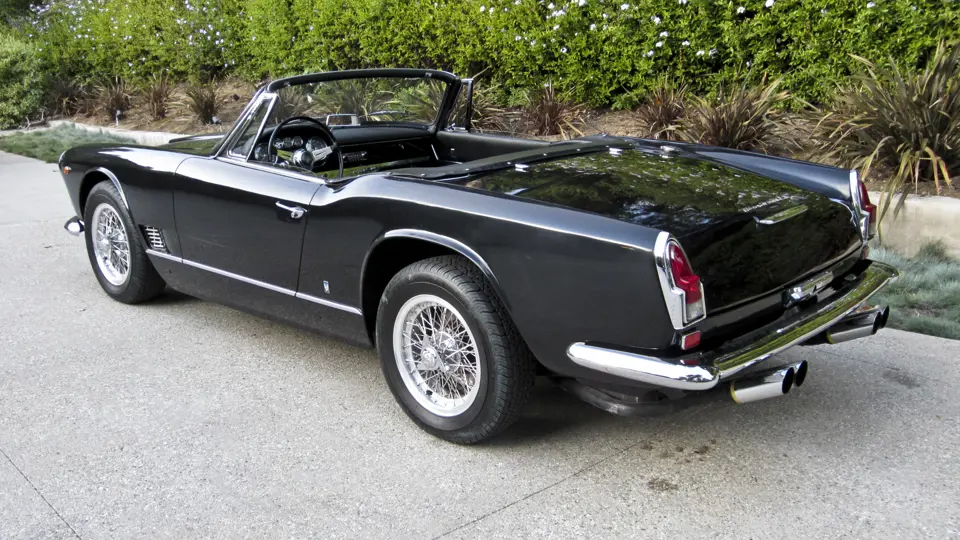



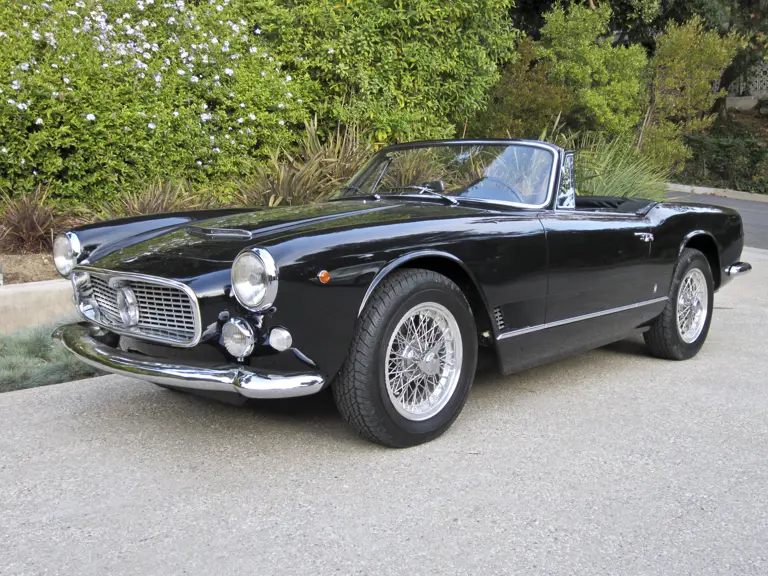
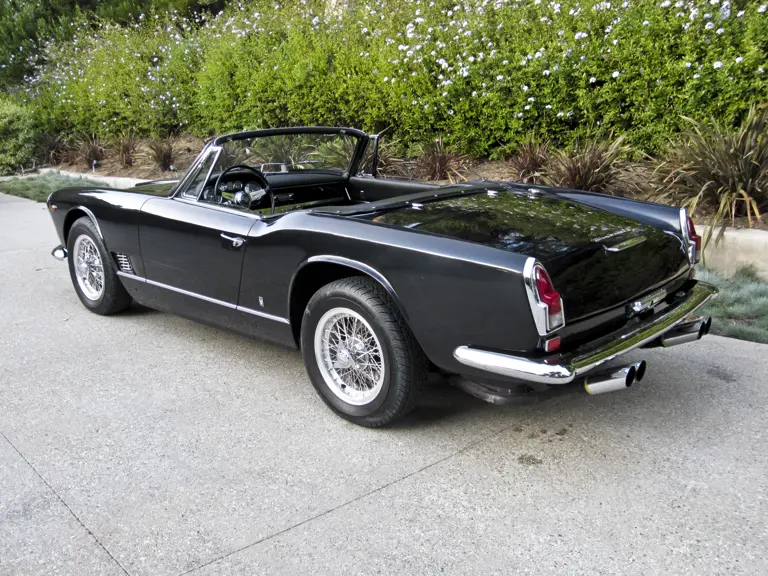

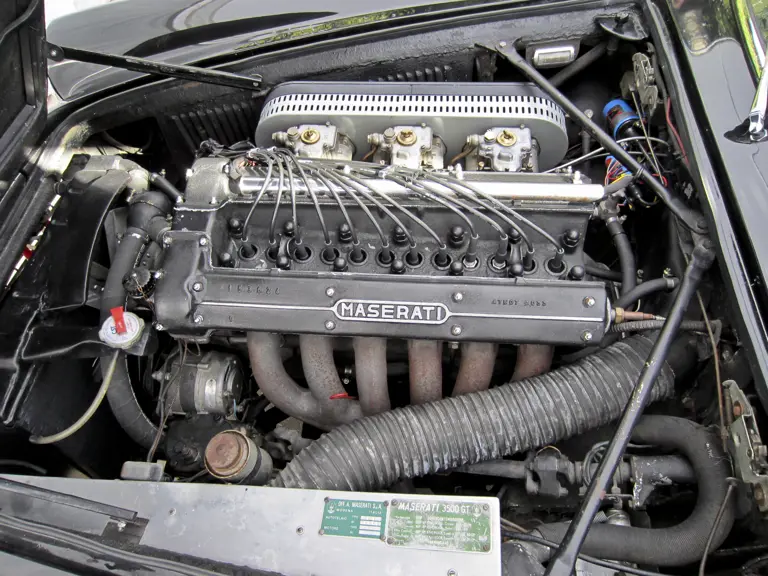

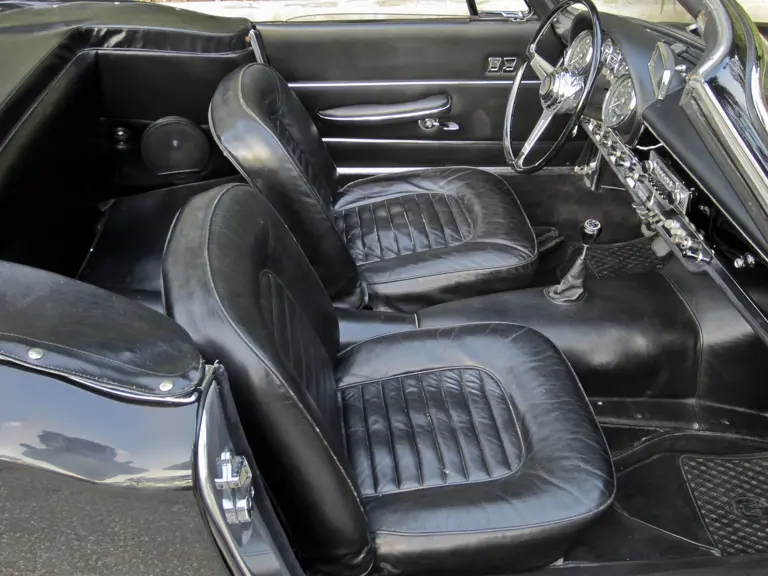
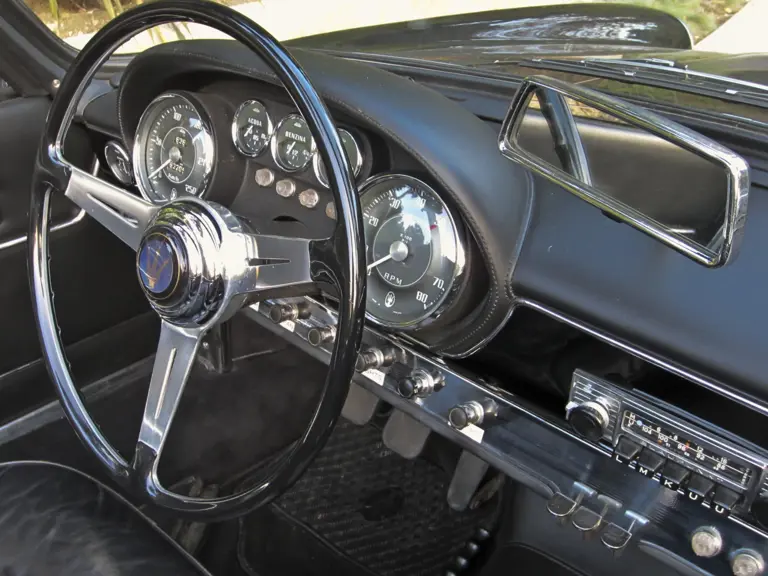
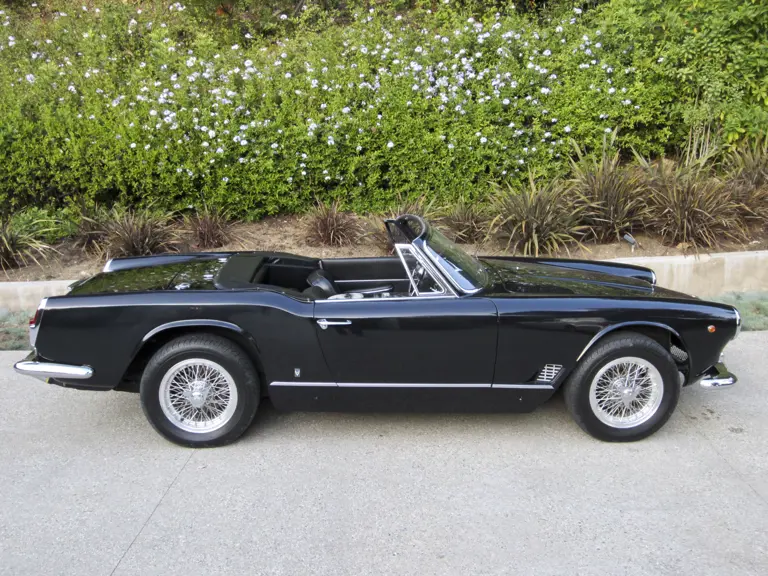
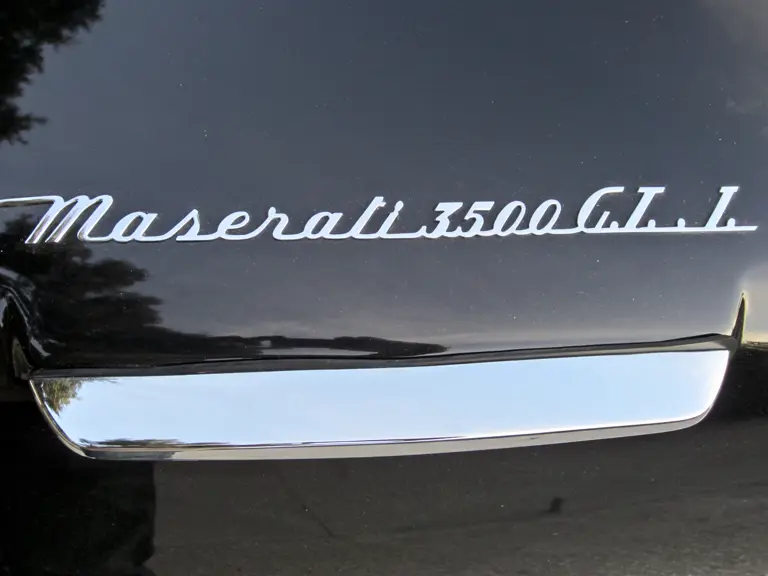
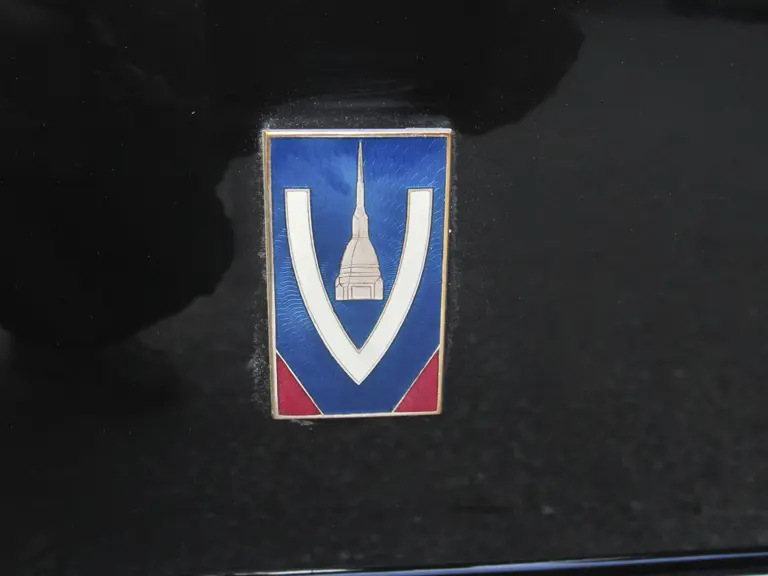

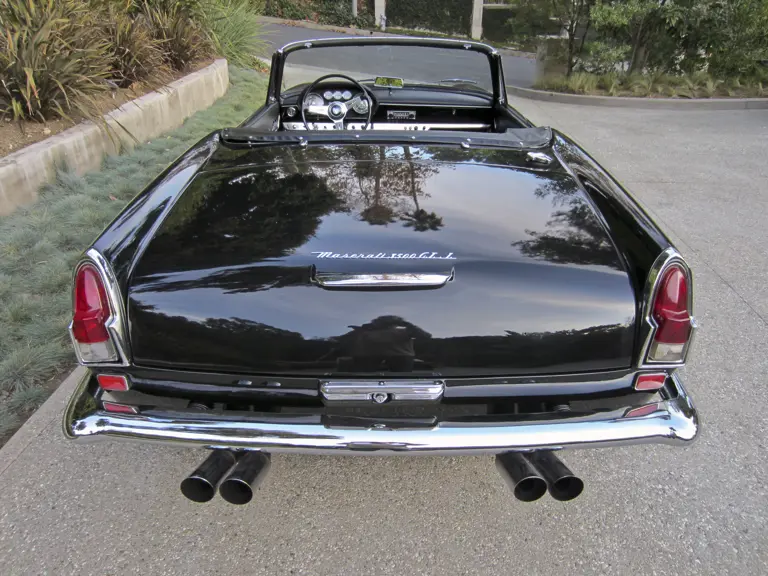
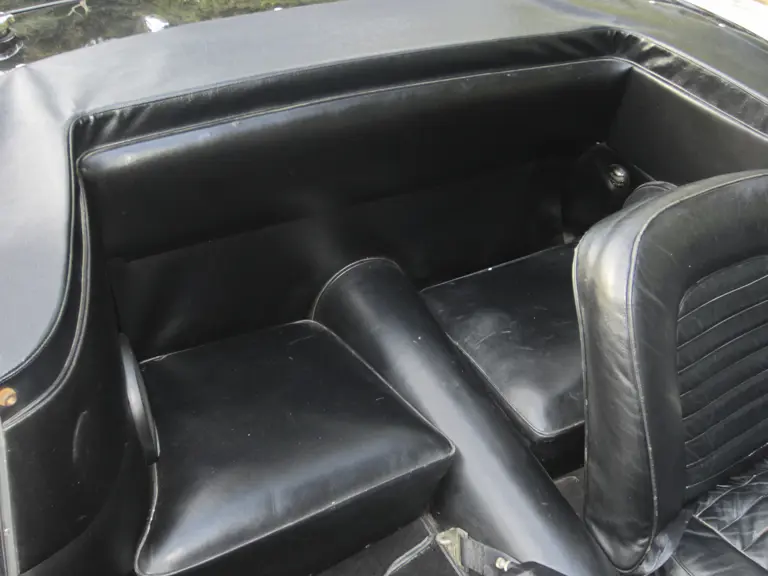
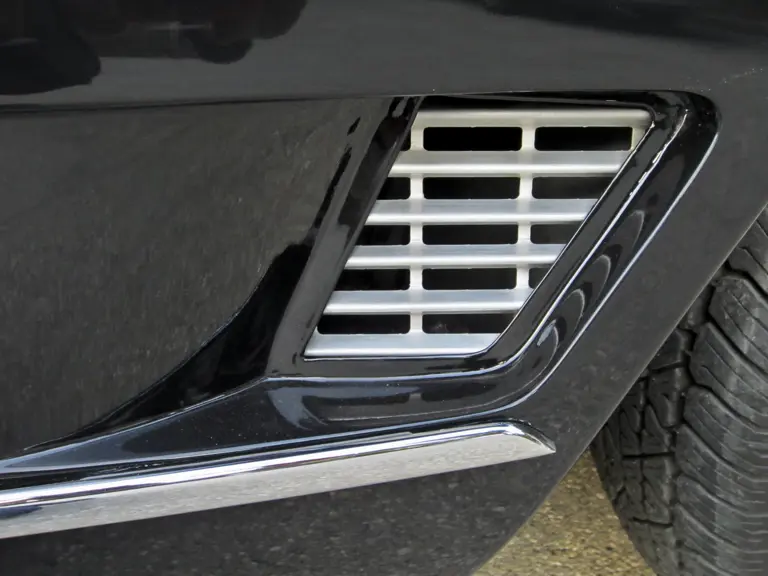
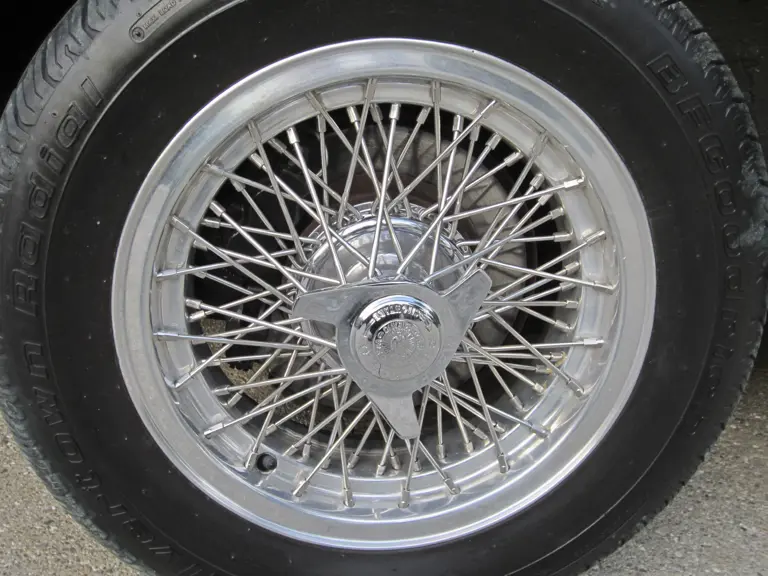

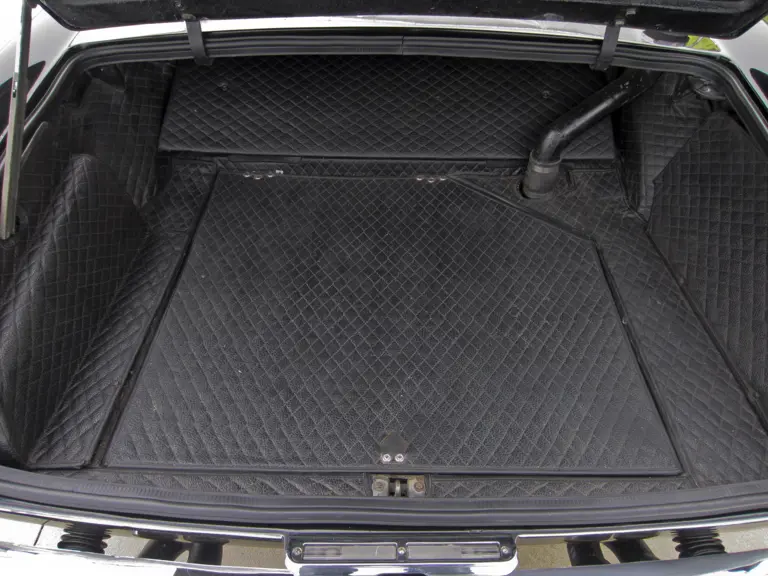
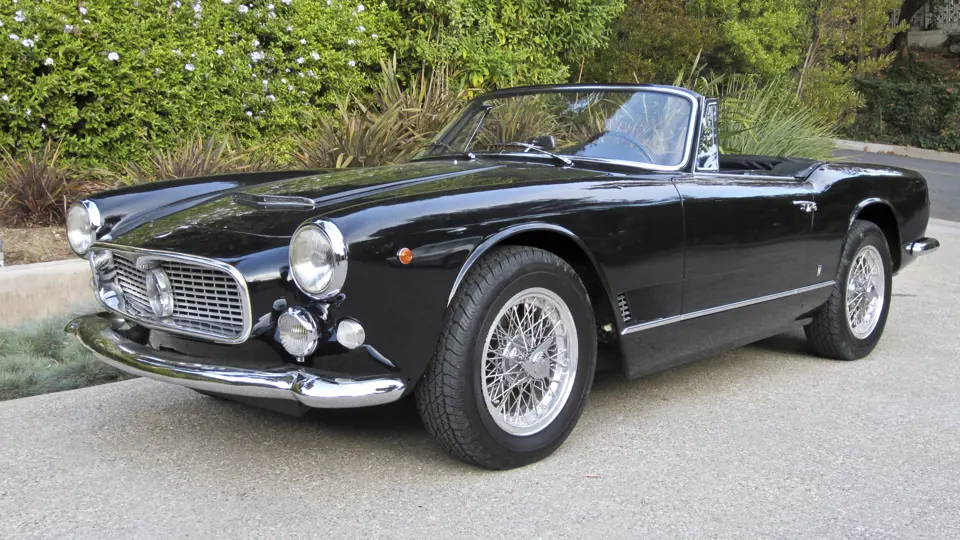
 | Phoenix, Arizona
| Phoenix, Arizona
